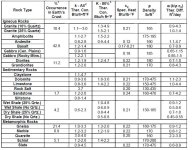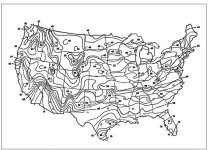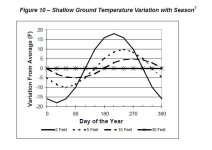It's silly.
With no disrespect, it is not silly, it is thermodynamics and math.
Your area has an average ground temp of 50 deg. At 10' depth, there is a +/- 10 deg seasonal variation which would mean that you would see 45 deg at the loop without pulling any heat during winter. Now assume something like 25,000 BTUs average demand in the winter, for typical soils you would see 25000/600 feet* 5 loops is another 8 deg colder. This will bring you down to 37 deg in the winter with a single linear pipe. If the pipe density is higher, as in a slinky, you can have 2 or three times temperature differential, bringing you into the mid 20's or lower. Factors that mitigate that are soil types, or as you stated moisture.
Slinkies are preferred due to a smaller overall area is required and/or reduced digging time and cost.



Paul